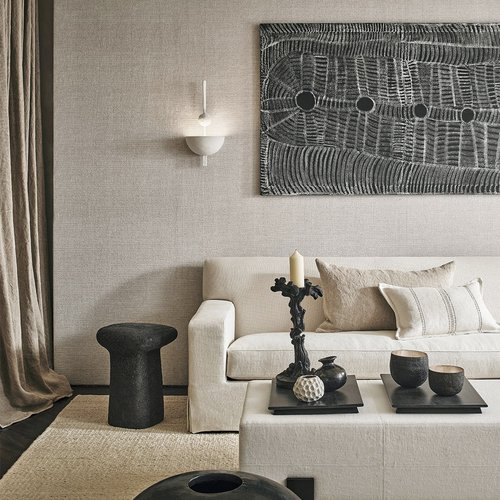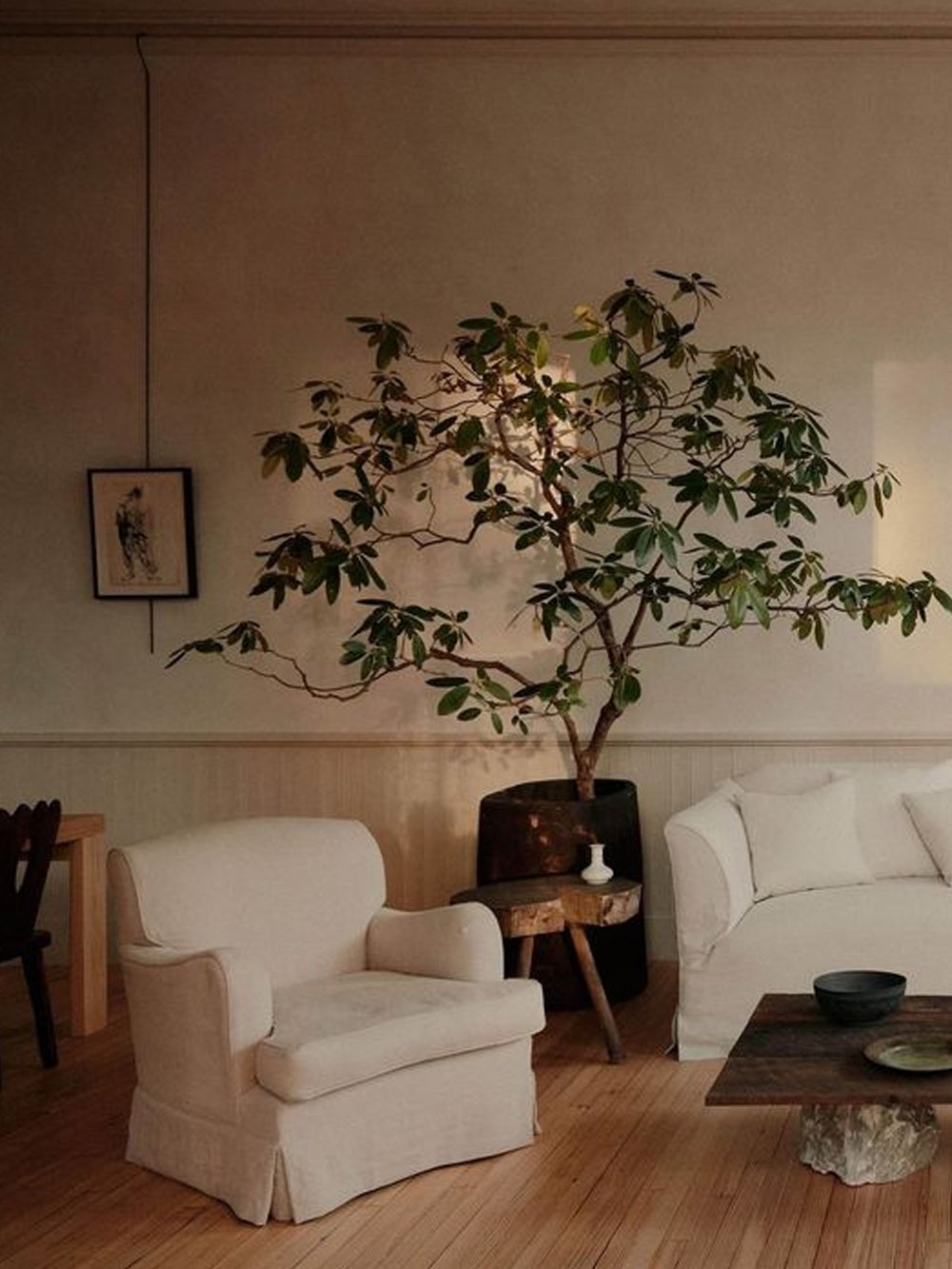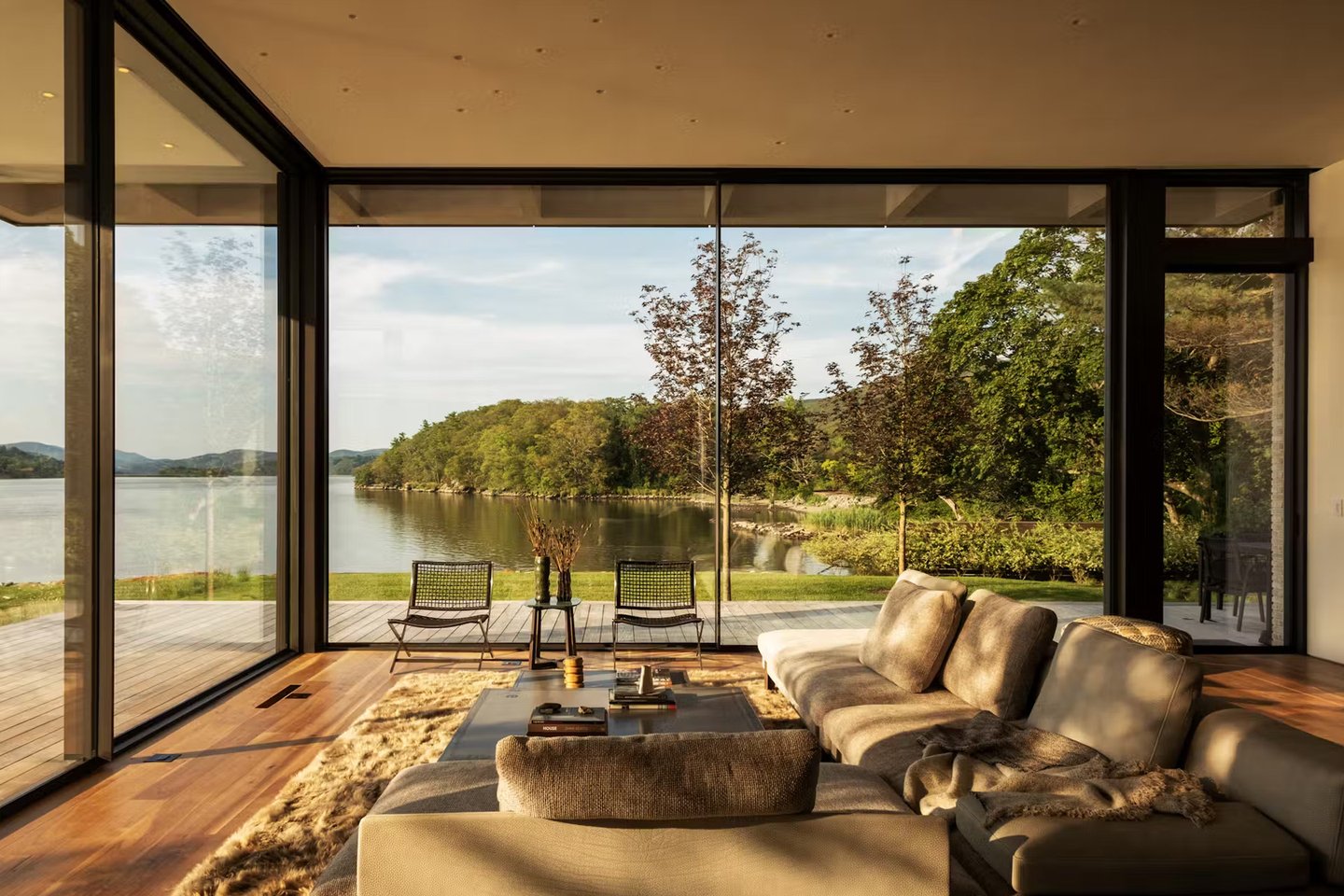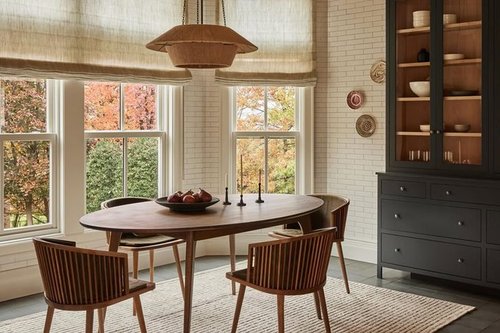
5 min read
The Fabric of Wellbeing: Choosing Upholstery that's Good for Health and the Planet
WLLW investigates the benefits of four upholstery options for our health and their environmental impact.

5 min read
Discover WLLW’s strategies for designing a living room that supports health, wellbeing and relaxation.
Whether you call it a living room, family room or den, creating a space that serves as a haven for both rest and interaction with loved ones is as important as ever in today’s fast-paced world. In this article, we’ll explore the essential elements of designing a healthy living room, from optimizing space to selecting the right lighting and materials. In the latest in WLLW’s 'How To...' series, we aim to help you make your living room a healthier, more mindful space.

When designing the layout, prioritize the main seating area to encourage conversation and interaction, with secondary spaces like a reading nook or more intimate corners added if space allows. Being open to a flexible layout can make the room feel fresh and dynamic. For example, consider positioning seating near windows to maximize daylight, especially during the winter months, or rearranging the space to suit different activities and moods. This adaptability helps create a living room that feels inviting year-round.
Storage is crucial in maintaining a healthy living room. Studies have shown that clutter can create mental strain, making it harder to relax. Opt for furniture with built-in storage, like coffee tables with hidden compartments or ottomans that double as storage units. Open shelving is an excellent way to display personal items like books, artwork or plants, adding a personal touch while keeping surfaces clear.
The color palette of your living room plays a significant role in shaping the mood and personalizing a space as color preferences are individual to each person. Color psychology suggests that different hues can influence our emotional state, so choosing the right tones is essential to creating a healthy living environment.
Neutral colors like soft whites, beiges and light grays provide a soothing backdrop that promotes relaxation and calmness. To add vibrancy and energy, incorporate accent colors through smaller decor items like cushions, rugs or artwork. Soft blues and greens, for instance, have a calming effect, while warmer tones like muted yellows and oranges can promote feelings of warmth and togetherness.


Lighting is one of the most important factors in creating a healthy living room, as it directly affects both the functionality and ambiance of the space. Studies have shown that a well-lit room can boost mood, and support circadian rhythms, while poor lighting can cause strain and fatigue.
Take advantage of natural light by positioning seating areas near windows and using sheer curtains that allow sunlight to filter in while providing privacy. Natural light has numerous health benefits, including improving mood and energy levels.
For artificial lighting, aim for a mix of task, ambient and accent lighting. Overhead lights provide general illumination, while floor or table lamps offer focused light for specific tasks, such as reading. Accent lighting, like wall sconces or recessed spotlights, can highlight architectural features, adding depth. Opting for warm yellow tone LED bulbs, closer to 3000 K, can help us relax in the evenings.
"Studies have shown that a well-lit room can boost mood, and support circadian rhythms, while poor lighting can cause strain and fatigue."
The materials used in your living room contribute significantly to the overall healthiness of the space. From flooring to paint, opting for natural, non-toxic materials can help reduce exposure to harmful chemicals and allergens, promoting better indoor air quality and wellbeing.
For flooring, natural wood is an excellent choice due to its durability and low levels of Volatile Organic Compounds (VOCs), which are harmful chemicals often found in synthetic materials. Rugs made from natural fibers like wool, jute or sisal add warmth and texture while avoiding the off-gassing associated with synthetic carpets. Just as important is the rug pad beneath, as many are made from synthetic, chemical-laden materials. Opt for natural rubber rug pads instead, which provide a healthier alternative.
When it comes to paint, select options that are low-VOC or VOC-free. These paints are better for both your health and the environment, reducing the release of potentially harmful fumes. Natural clay or mineral paints are often the purest choices, as they are made from all natural materials. A clay coat offers a beautiful matte finish that adds warmth and character to the room.

Upholstered furniture like sofas and chairs should be made from non-toxic, sustainable materials to prevent exposure to harmful chemicals. When it comes to drapery and other textiles, opt for natural fabrics like organic cotton, linen or wool, which are breathable and hypoallergenic. Synthetic fabrics, especially those treated with flame retardants or stain-resistant chemicals, can off-gas harmful substances into the air, potentially causing respiratory or skin issues. Choosing sustainable and non-toxic fillings like natural latex or organic wool for pillows can also contribute to a healthier living environment.
When selecting furniture, consider pieces made from solid wood rather than MDF (medium-density fiberboard), which can release formaldehyde over time that causes eye, nose and throat irritation, as well as being carcinogenic. Furniture made from certified sustainable sources, such as FSC-certified wood, ensures that your choices are not only healthy but also environmentally responsible.
Incorporating healthy artwork into your living room not only adds a personal and aesthetic touch but also plays a crucial role in maintaining a healthy environment. Opt for pieces created with non-toxic, natural materials such as water-based paints or sustainably sourced wood frames, as this minimizes the presence of harmful chemicals.
Good indoor air quality is essential for a healthy living room, as poor air can lead to various health problems, from allergies and respiratory issues to mental health challenges. Several factors contribute to air quality, from ventilation to the materials used in your furniture and decor.
Open windows regularly to allow fresh air to circulate and reduce the buildup of indoor pollutants. In rooms where natural ventilation is limited, consider using air purifiers with HEPA filters to remove dust, pollen and other airborne allergens.
Certain plants, like the snake plant, peace lily and spider plant, are known for their ability to filter pollutants and increase oxygen levels. Biophilic design principles, which include the use of plants, have been shown to contribute to improved health and wellbeing.
Avoid using synthetic air fresheners or candles that can release harmful chemicals into the air. Instead, opt for natural alternatives, such as beeswax candles or essential oil diffusers, to freshen the air without introducing toxins.




Feature Image: Designed by Bespoke Only, photo courtesy of Nicole Franzen
Photography: Manola Studio, William Jess Laird, Nicole Franzen, Amber Lewis, Gregory Maka

5 min read
WLLW investigates the benefits of four upholstery options for our health and their environmental impact.

5 min read
In this edition of our ‘How To…’ series, WLLW shows you how to bring health, sustainability and ambiance to your dining room.